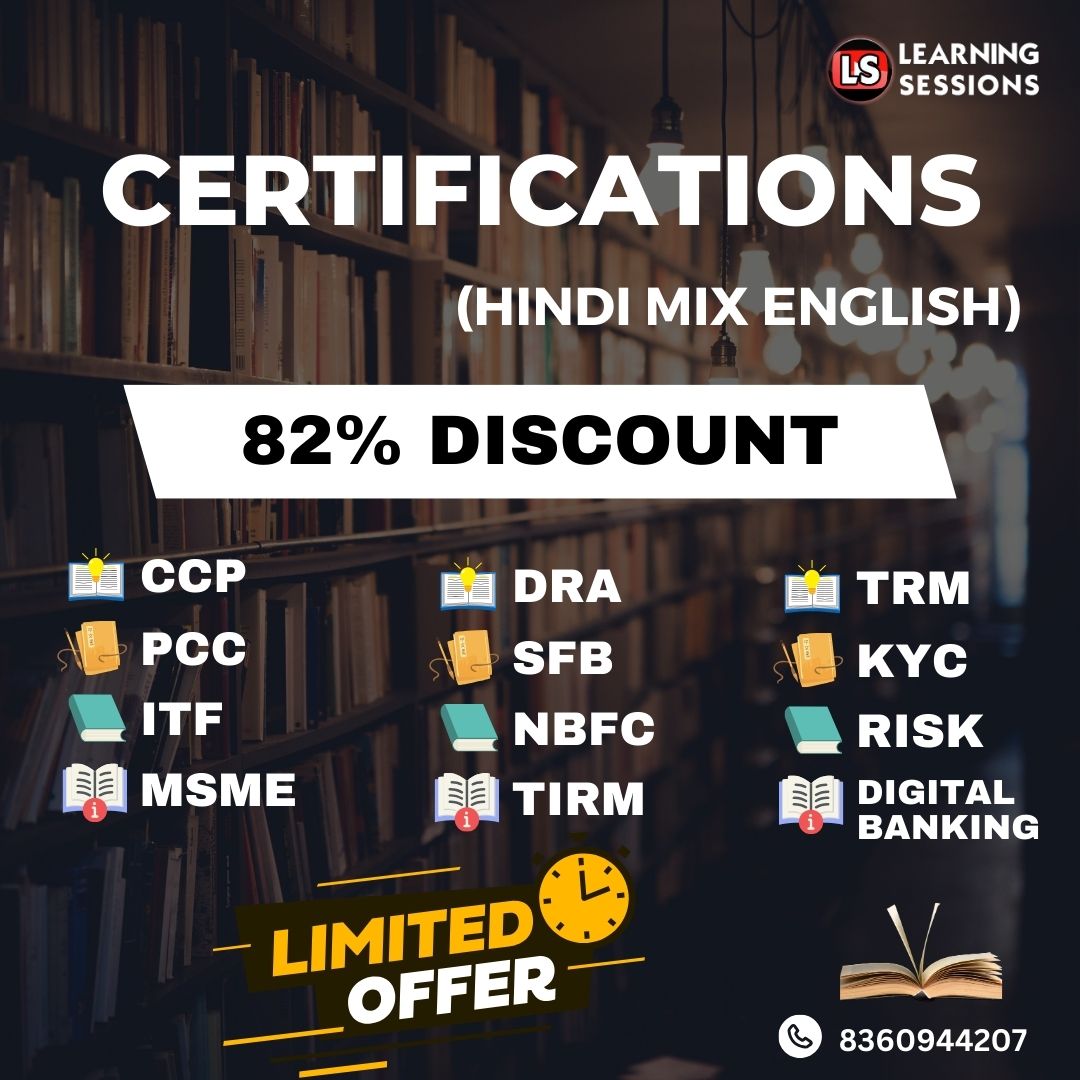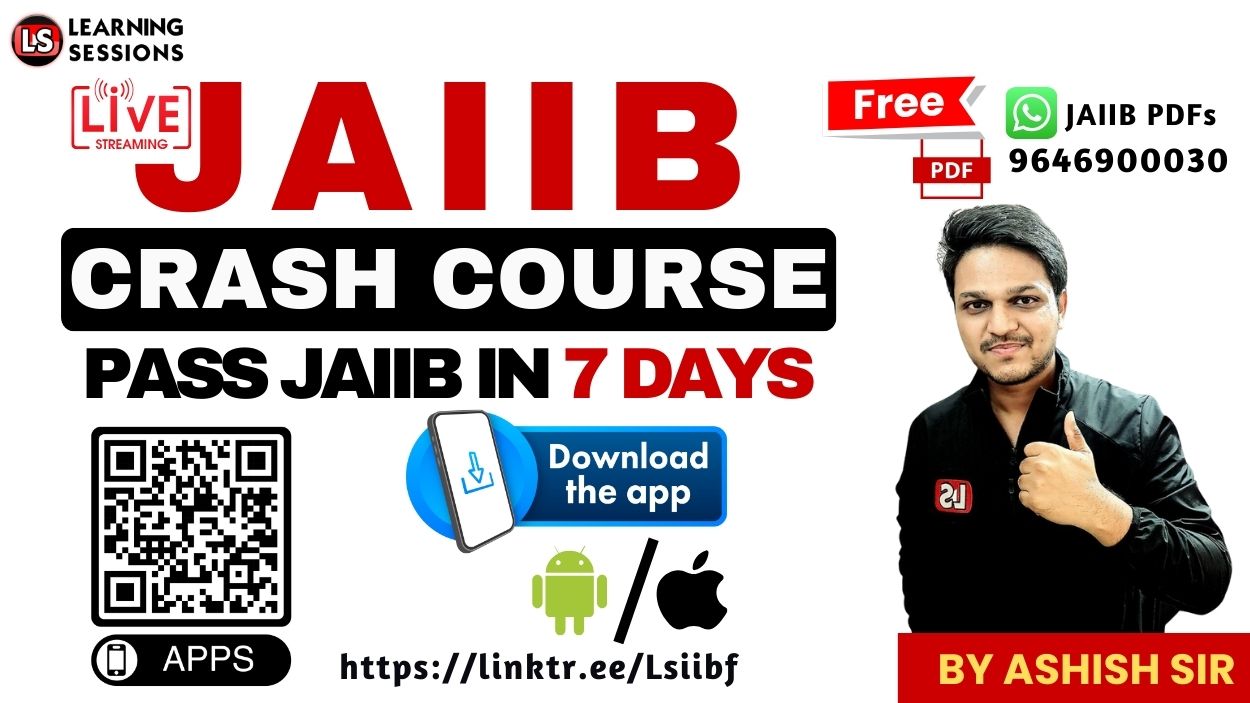📢 Are RBI’s complex circulars and resolution norms confusing you?
You’re not alone! Most banking aspirants, especially those preparing for the CCP (Certified Credit Professional) exam, find it tricky to decode concepts like Holding on Operations, Right of Recompense, and Prudential Norms.
This video is the Part 2 of our comprehensive series on Resolution of Stressed Assets, where we break down not just the theory, but also real-world implications, case studies, RBI’s 2019 Framework, provisioning timelines, and MSME recovery plans.
Whether you’re a bank officer, credit analyst, or a serious aspirant aiming for career growth through CCP certification — this video is your ultimate guide to mastering one of the most scoring topics in the exam.
👉 Don’t forget to watch the full video, drop your questions in the comments, and share it with your friends and colleagues. Let’s learn together and grow together 🚀
👉 Before we dive in, watch this video for a complete breakdown:
📌 Timestamp-wise Breakdown
⏱️ 00:00 – Welcome & Importance of the Topic
Warm welcome and recap of Part 1. Encouragement to watch this session to unlock new advanced concepts and score more in CCP exams.
⏱️ 00:32 – Holding on Operations
- Borrower’s exposure is frozen
- Only operations within a set limit allowed
- Irregular part moved to WCTL account
- Regulated via cash budget
⏱️ 01:38 – Right of Recompense
Bank reserves the right to recover previously waived concessions once borrower is financially sound again. Mentioned in sanction letters and reflected as contingent liability.
⏱️ 03:25 – Prudential Framework 2019
- Applicable to SCBs, SFBs, NBFCs
- Not applicable to RRBs, MSMEs (< ₹25 Cr), IBC-invoked accounts
⏱️ 05:32 – SMA Identification & CRILC Reporting
SMA-0, 1, 2 classification explained. CRILC reporting mandatory for exposures above ₹5 Cr.
⏱️ 06:07 – Resolution Plan & ICA Agreement
- Resolution strategy needed within 30 days
- ICA required for multi-lender accounts
- 75% value & 60% number lender approval needed
⏱️ 07:41 – Implementation Timeline & Evaluation
180-day implementation post-review period. Independent Credit Evaluations (ICEs) based on exposure size.
⏱️ 09:12 – Assignment of Debt & Provisioning Delays
- Assignment ends bank’s recovery rights
- Delay beyond 180 days → 20% provision
- Delay beyond 365 days → additional 15%
⏱️ 11:15 – Reversal of Provisioning
Reversal possible only after clearing overdues + no default for 6 months.
⏱️ 12:14 – Restructuring Explained
Interest reduction, tenure increase, and concessions to help genuine defaulters. Standard assets downgraded post restructuring.
⏱️ 13:43 – Upgradation Conditions
No default + 10% repayment + 1 year gap → asset upgradation eligibility.
⏱️ 14:41 – Monitoring Period & Defaults
Default during monitoring triggers new plan and 15% additional provisioning.
⏱️ 15:43 – Income Recognition & Asset Conversion
- Standard account → accrual basis
- NPA account → cash basis
- Converted instruments retain original classification
⏱️ 17:16 – Change in Ownership
Ownership change may result in asset upgrade if acquirer qualifies under IBC Section 29A and meets equity/voting criteria.
⏱️ 18:18 – Sale & Leaseback Restructuring
Treated as restructuring if majority revenue links to seller & 25% funding from existing lender.
⏱️ 19:30 – Refinancing Consideration
Refinancing stressed debt → treated as restructuring if backed by guarantees/comfort letters.
⏱️ 21:00 – Fraud & Wilful Defaults
Generally not eligible for restructuring unless complete promoter disassociation occurs.
[FREE EPDF] CCP | Types of Charges | Chapter 24 | Part 2 | IIBF CERTIFICATIONS
⏱️ 22:59 – MSME Revival Framework
- Exposure ≤ ₹25 Cr → separate MSME CAP Framework (2016)
- Special Mention classification + CAP committee formation
- Three options: Rectification, Restructuring, Recovery
⏱️ 34:12 – Legal Recovery Options
- Exit
- Compromise
- Court/DRT Suit
- Asset Sale
⏱️ 44:17 – Types of Court Decrees
- Money decree
- Preliminary & Final mortgage decree
- Installment decree
- Mutual Consent decree
- Ex parte decree
✅ Conclusion
This session explained RBI’s framework, CRILC reporting, provisioning rules, MSME recovery, and legal proceedings in simple, practical terms.
🎯 Don’t just watch — revise your notes, attempt mock tests, and apply this in credit analysis work.
💬 Drop questions in the comments. 📩 Subscribe and hit the bell icon for more exam-smart content!
📥 Download the PDF Notes
Get the complete transcript, key formulas, and examples in a downloadable format.
👉 Click Here to Download PDF
Also Like:







